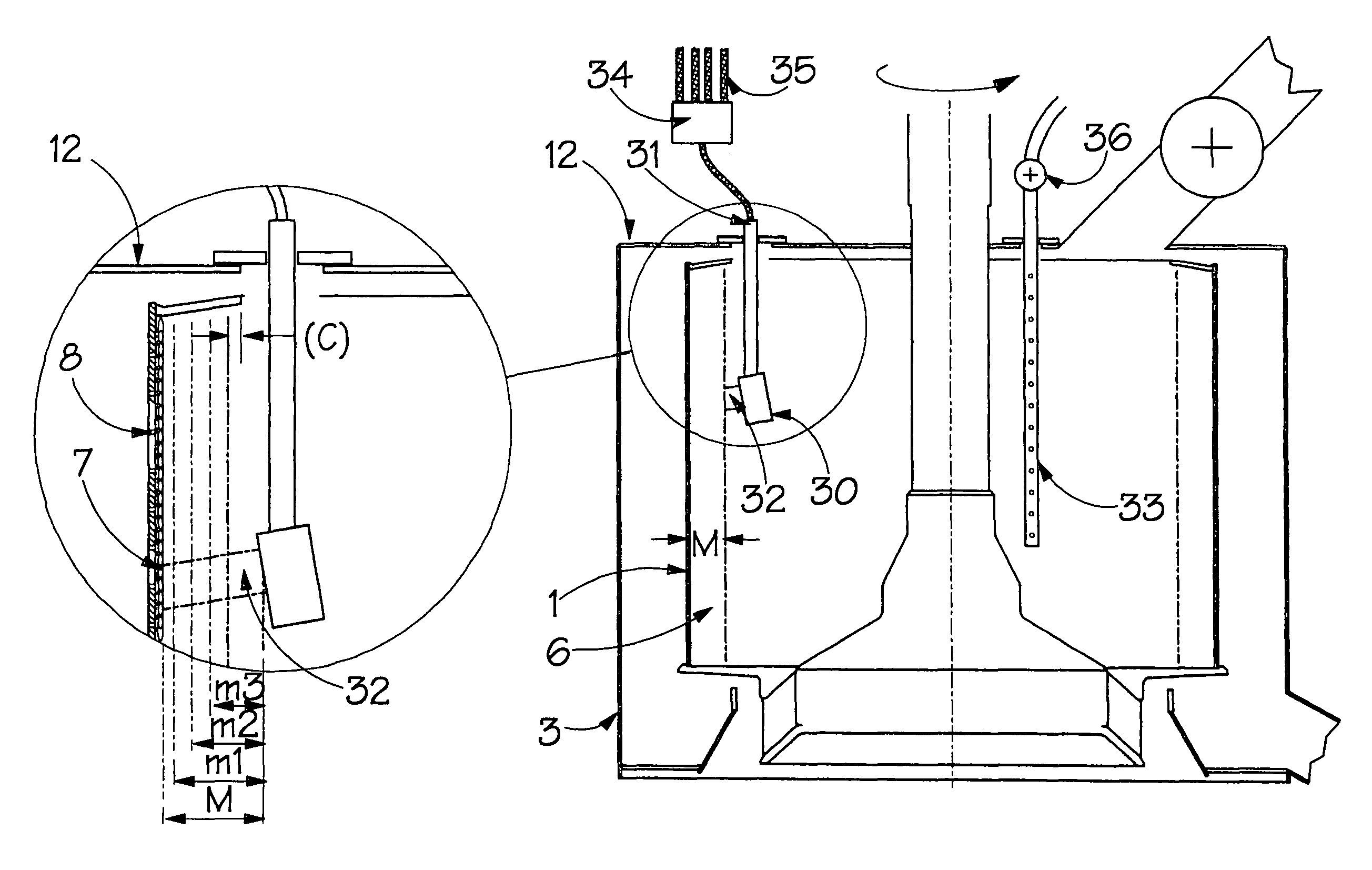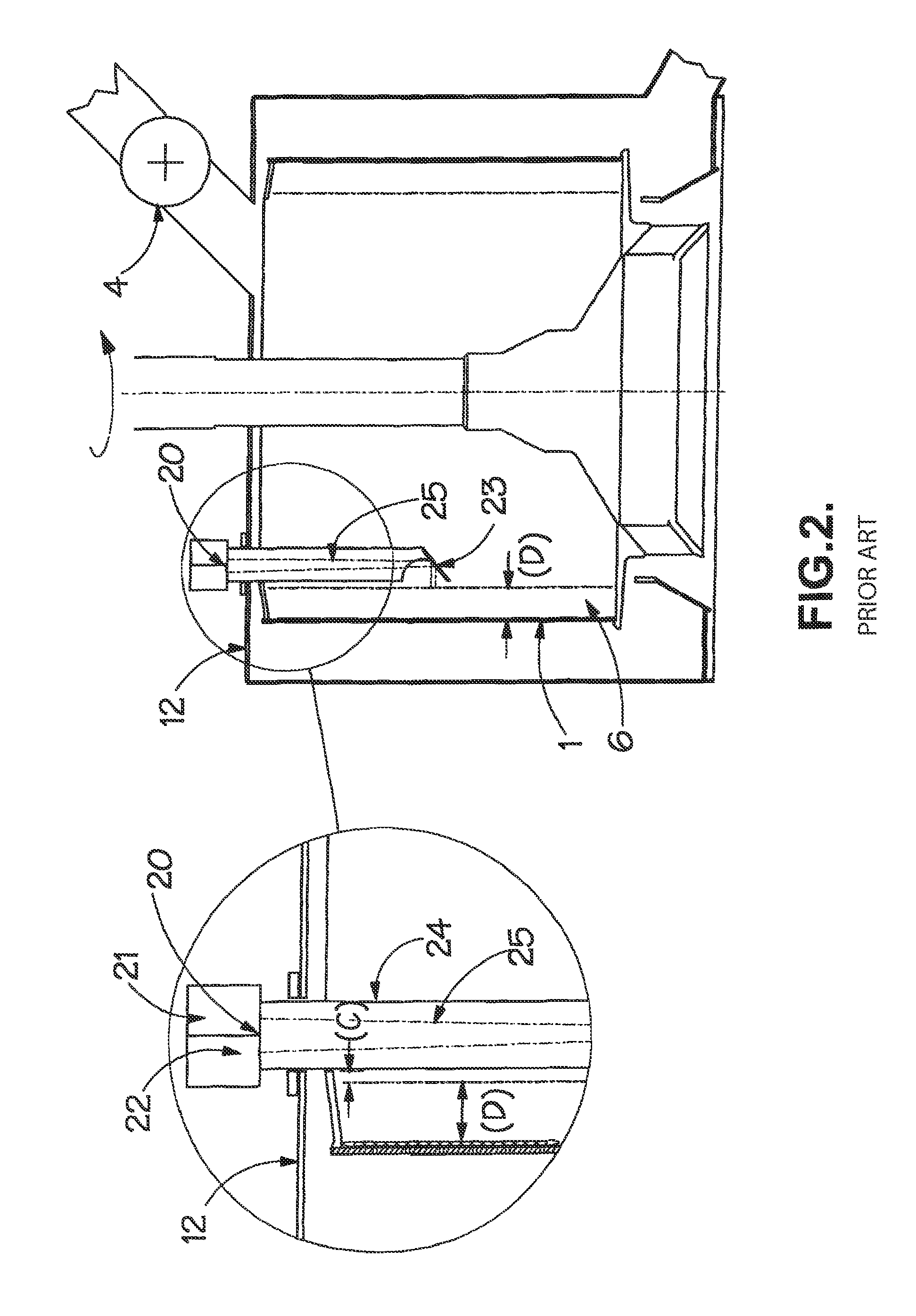Control of centrifuges
a centrifuge and control technology, applied in centrifuges, gravity filters, feed/discharge settling tanks, etc., can solve the problems of reducing the volume of slurry processed, reducing the accuracy of centrifuges, so as to maximise the performance and utilisation of centrifuges, the effect of maximising the loading of basket slurry and improving the process
- Summary
- Abstract
- Description
- Claims
- Application Information
AI Technical Summary
Benefits of technology
Problems solved by technology
Method used
Image
Examples
Embodiment Construction
[0044]Referring now to FIG. 3, the first embodiment in accordance with the present invention has a basket 1, casing 3 and casing top 12 as in the centrifuges illustrated in FIGS. 1 and 2. The principal difference lies in the use of a laser to measure the material depth in the basket. As shown in FIG. 3, a laser unit 30 is mounted inside the basket, supported by a bracket 31 fixed to the casing top so that it is non-rotating and pointed towards the cylindrical slurry volume 6 rotating in the basket which, as shown in original FIG. 3, moves past the non-rotating laser unit 30. FIG. 4 shows an alternative arrangement with the laser unit 30 mounted on the outside of the casing top 12 and pointed indirectly to the volume 6 via a reflecting prism (or the equivalent) 37 supported inside the basket by a bracket 38. The descriptions that follow give in detail the operation of the arrangements in both FIGS. 3 and 4.
[0045]The laser unit 30 emits a continuous series of pulses (or a continuous b...
PUM
| Property | Measurement | Unit |
|---|---|---|
| temperatures | aaaaa | aaaaa |
| coherent light energy | aaaaa | aaaaa |
| volume | aaaaa | aaaaa |
Abstract
Description
Claims
Application Information
 Login to View More
Login to View More - R&D
- Intellectual Property
- Life Sciences
- Materials
- Tech Scout
- Unparalleled Data Quality
- Higher Quality Content
- 60% Fewer Hallucinations
Browse by: Latest US Patents, China's latest patents, Technical Efficacy Thesaurus, Application Domain, Technology Topic, Popular Technical Reports.
© 2025 PatSnap. All rights reserved.Legal|Privacy policy|Modern Slavery Act Transparency Statement|Sitemap|About US| Contact US: help@patsnap.com



